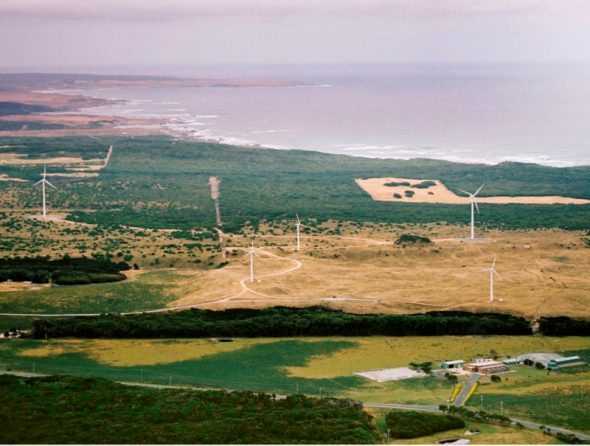Hydro Tasmania’s proposal to develop a 200-turbine wind farm on King Island has won a vote of confidence from locals, after a survey indicated a majority of the community supports plans for a feasibility study on the TasWind project.
Against a backdrop of a small, but fierce anti-wind campaign, the survey of King Island residents and landowners, conducted by independent market research company EMRS, found that 59 per cent of the 878 respondents indicated support for a $30 million feasibility study to proceed on the proposed 600MW project.
The lengthy community consultation process was initiated by Hydro Tasmania six months ago in 2012, with the aim of engaging King Island locals in the decision-making process from the beginning, and win their backing of a two-year feasibility study, investigating potential economic impacts and benefits, potential locations for the wind farm, and the potential impacts and benefits on the local community and businesses.
The final vote count fell just short of the company’s stated ideal of 60 per cent, but Hydro Tasmania’s Andrew Catchpole said 59 per cent was still a “very good result,” and a good indication of broad community support for the wind farm feasibility study.
Catchpole also said that the company recognised there were still many people on King Island concerned about the idea of a wind farm; a sentiment that has also been detected – and exploited – by a small, but well-resourced anti-wind group, whose counter campaign came dangerously close to derailing Hydro Tasmania’s community consultation efforts.
In their efforts to block the King Island TasWind project, anti-wind campaigners have pulled out all the stops – importing several noted anti-wind activists, hiring a Sydney PR firm well known for its support of controversial issues, and taking to social media (the King Island Facebook page is said to be administered by the anti-wind side).
And in late May, Hydro Tasmania had to make a public intervention in the debate, after a local committee released what it claimed to be a thorough economic analysis of the impact of the project, which suggested that the 600MW wind farm would deliver less economic benefit than two mooted luxury golf courses over a 20-year period.
Now, the company says it will proceed with the feasibility study, “in a careful manner that is sensitive to the concerns of the community;” a result that has been welcomed by many in the Australian renewable energy camp.
“Despite an anti-wind energy scare campaign backed by wealthy NIMBYs and big PR, the community has voted for a wind farm feasibility study,” said Yes 2 Renewables spokesperson Leigh Ewbank. “The King Island community will now be able to get all the information to needed to make an informed choice about the wind farm proposal.”
Hydro Tas says it will continue to consult with the community, in particular on its principal concerns of visual impact, noise impact, and any potential impact on health.
“We will focus as a matter of priority on resolving the elements of wind farm feasibility that have the most impact on these concerns, especially location, so that we can address these areas of concern,” Catchpole said.
“To do this we will need to undertake further wind measurements and discuss potential sites with landowners so that we can model an actual proposed location along with continuing to analyse the economic viability of the wind farm. We will also undertake a brand impact assessment, so the community can better understand the risks and benefits of this project to the King Island brand.”
Hydro Tasmania plans to devise a model of the proposed wind farm layout, and provide an opportunity for the King Island community to provide feedback on that model before undertaking further aspects of the feasibility process, and before a development application is lodged.
If built there would, Hydro Tas says the wind farm would provide “significant ongoing benefits” to King Island: including an annual Community fund of around $1 million, which could help fund cheaper power for all households and businesses or an upgrade of community infrastructure; the creation of 500 jobs; and considerable investment during construction.










